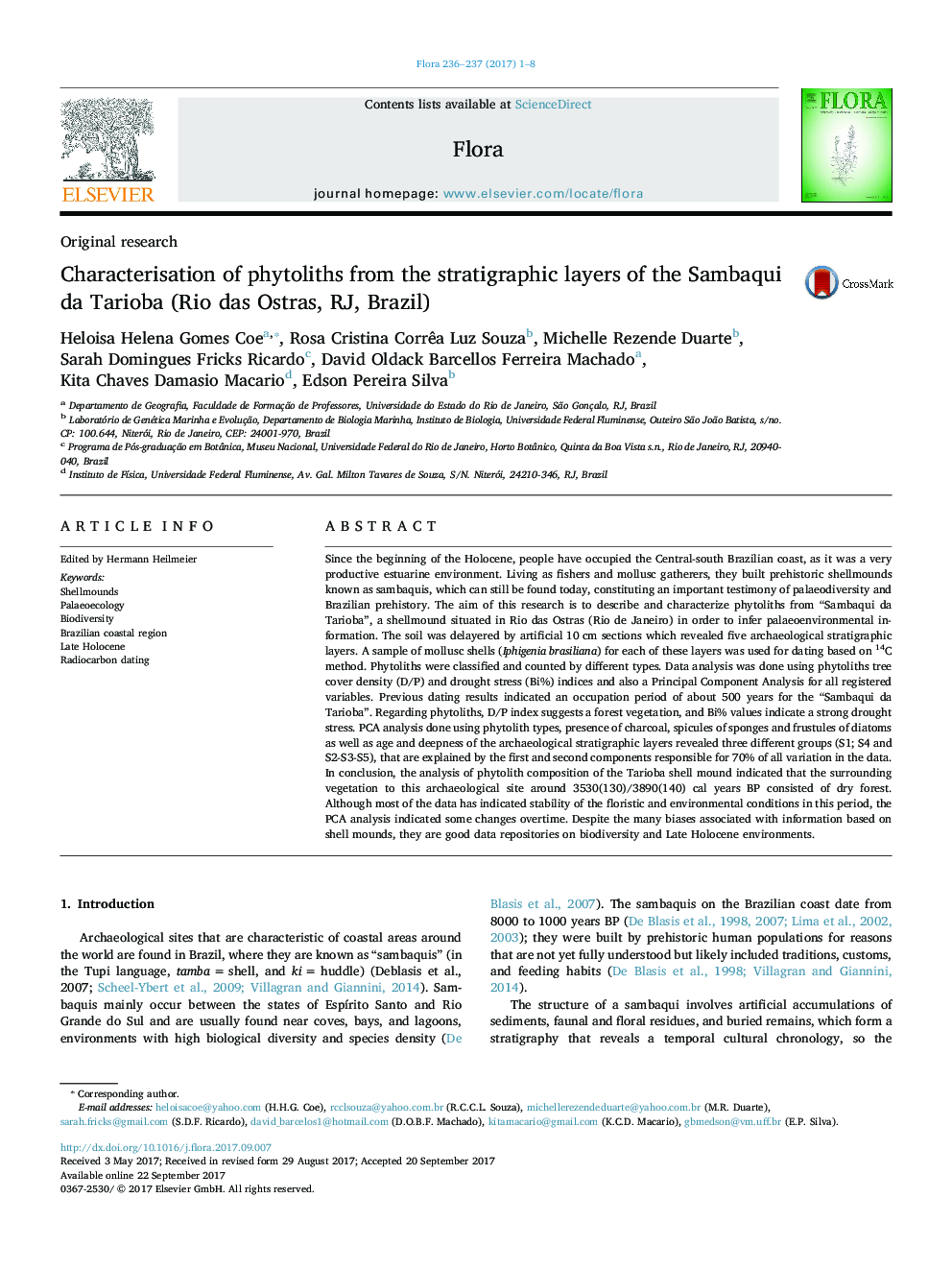| کد مقاله | کد نشریه | سال انتشار | مقاله انگلیسی | نسخه تمام متن |
|---|---|---|---|---|
| 5532286 | 1549923 | 2017 | 8 صفحه PDF | دانلود رایگان |

- “Sambaqui da Tarioba” was occupied in a period between 3880(160) and 3530(130) cal y BP.
- Predominant phytolith types in shell mound were globular granulate and bulliform.
- Phytolith indexes suggested an environment of forests with drought stress.
- Shell mounds can be a good proxy on Holocene biodiversity and environments.
Since the beginning of the Holocene, people have occupied the Central-south Brazilian coast, as it was a very productive estuarine environment. Living as fishers and mollusc gatherers, they built prehistoric shellmounds known as sambaquis, which can still be found today, constituting an important testimony of palaeodiversity and Brazilian prehistory. The aim of this research is to describe and characterize phytoliths from “Sambaqui da Tarioba”, a shellmound situated in Rio das Ostras (Rio de Janeiro) in order to infer palaeoenvironmental information. The soil was delayered by artificial 10Â cm sections which revealed five archaeological stratigraphic layers. A sample of mollusc shells (Iphigenia brasiliana) for each of these layers was used for dating based on 14C method. Phytoliths were classified and counted by different types. Data analysis was done using phytoliths tree cover density (D/P) and drought stress (Bi%) indices and also a Principal Component Analysis for all registered variables. Previous dating results indicated an occupation period of about 500 years for the “Sambaqui da Tarioba”. Regarding phytoliths, D/P index suggests a forest vegetation, and Bi% values indicate a strong drought stress. PCA analysis done using phytolith types, presence of charcoal, spicules of sponges and frustules of diatoms as well as age and deepness of the archaeological stratigraphic layers revealed three different groups (S1; S4 and S2-S3-S5), that are explained by the first and second components responsible for 70% of all variation in the data. In conclusion, the analysis of phytolith composition of the Tarioba shell mound indicated that the surrounding vegetation to this archaeological site around 3530(130)/3890(140) cal years BP consisted of dry forest. Although most of the data has indicated stability of the floristic and environmental conditions in this period, the PCA analysis indicated some changes overtime. Despite the many biases associated with information based on shell mounds, they are good data repositories on biodiversity and Late Holocene environments.
Journal: Flora - Volumes 236â237, November 2017, Pages 1-8